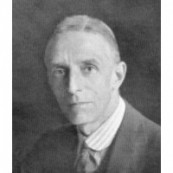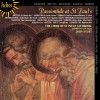| Country: | England |
| Period: | Neoclassicism |
Biography
Sir Edward Cuthbert Bairstow (22 August 1874 – 1 May 1946) was an English organist and composer in the Anglican church music tradition.
Baistow was born in Huddersfield in 1874. He studied organ with John Farmer at Balliol College, Oxford, and while articled under Frederick Bridge of Westminster Abbey received tuition from Walter Alcock. He studied organ and theory at the University of Durham, receiving the Bachelor of Music in 1894, and the Doctor of Music in 1901.[1]
After holding posts in London, Wigan and Leeds, he served as organist of York Minster from 1913 to his death, when he was succeeded by his former pupil Francis Jackson. He was knighted in 1932.
Notorious for his terseness and bluntness, Bairstow did not always endear himself to others. Asked whether he would be willing to follow the example of his predecessor at York, Thomas Tertius Noble, and go to the United States, he replied that he would "rather go to the devil". Comfortably ensconced in Yorkshire, where he was a close friend of the equally blunt Dr Moody, Organist at Ripon Cathedral, he refused the offer to succeed Frederick Bridge at Westminster Abbey. He instead recommended his erstwhile pupil Ernest Bullock, who was duly appointed to the post.
Bairstow's compositions are mainly for the church. He wrote 29 anthems, ranging from large-scale works for choir and organ such as Blessed city, heavenly Salem to elegant miniatures like I sat down under his shadow and Jesu, the very thought of thee. Among his anthems, the masterly Let all mortal flesh keep silence is perhaps the best known. His service music includes published settings in D (Evening 1906, Communion 1913, Morning 1925), E-flat (Full Setting, 1923), and G (Evening, 1940), and several unpublished works. He also composed psalm chants, hymn tunes, and a cantata, The Prodigal Son, for choir and chamber orchestra.
Bairstow was also active as an instrumental composer, mainly for the organ, and some 12 pieces were published in his lifetime, the finest being the 1937 Sonata in E-flat. His small output of chamber music includes a set of variations for two pianos and another set of variations for violin and piano, both long out of print.







![Great European Organs. 04-Graham Barber [Truro Cathedral]](http://static.classicalm.com/repository/collection-cover/small/847-img1340527297535061.jpg)
![Great European Organs. 34-John Scott [St Paul's Cathedral London]](http://static.classicalm.com/repository/collection-cover/small/907-img1341735503533836.jpg)
![Great European Organs. 56-John Scott Whiteley [Sheffield City Hall]](http://static.classicalm.com/repository/collection-cover/small/951-img1342361735689340.jpg)
![Great European Organs. 66-Graham Barber [Ripon Cathedral]](http://static.classicalm.com/repository/collection-cover/small/971-img1342718008531169.jpg)
